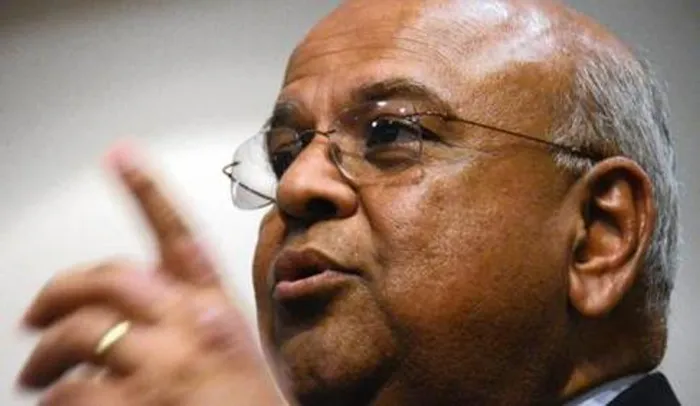Expect to pay more tax after Budget

Finance Minister Pravin Gordhan File photo Finance Minister Pravin Gordhan File photo
Finance Minister Pravin Gordhan indicated, during his Medium-term Budget speech last October, that there would be tax increases of R13 billion in 2017, and provisionally further tax increases of R15 billion in 2018.
These are in addition to the approximately R15 billion tax increases that were introduced in 2016. Therefore, middle to high-income earners can expect further tax increases in the national Budget speech later this month.
The tax tables are adjusted on an annual basis, to minimise the effect of bracket creep (also called fiscal drag), where the inflation-related increase received by a taxpayer pushes her or him into a higher tax bracket, resulting in higher taxes. When the fiscus seeks tax increases, however, this is an “easy” way to raise a few billion rand.
The Davis Tax Committee Second and Final Report on Macro Analysis Framework - Executive Summary ( April 21, 2016) suggested raising the lower marginal tax rates and the top tax rates, while reducing those in the middle of the schedule.
We can anticipate tax tables will not be adjusted fully for the bracket creep effect in 2017, and we will most likely see the top marginal tax rate increase from 41 percent to 42 percent at a minimum.
This may potentially be accompanied by an increase in the lower marginal tax rates with some relief in the “middle” rates”.
Further, there was an increase in the “inclusion rate” for capital gains tax last year, increasing the effective CGT rate. However, the gap between the effective tax rates for income and capital gains provides certain incentive for structuring or incorrect categorisation of amounts. We may therefore see further increases to the inclusion rate, to increase the CGT rate and narrow this “gap”.
Read also: #Budget2017 is going to be painful
Also predicted to be on the agenda is the absence of branch profits tax in South Africa, which means that non-residents trading through branches of external companies are at an advantage relative to South African companies, or non-residents trading through local subsidiaries.
Given the significant effort in renegotiating tax treaties, with the aim of securing a minimum dividends tax rate of 5 percent in a cross-border context, it appears anomalous this can be (and is) avoided through the use of branch structures. In the circumstances, a branch profits tax, at a minimum rate of 5 percebt should be anticipated.
Inspection
Another priority in 2017 will be the extension of the South African tax base. While Sars has always had the power to verify tax registration of taxpayers, the Tax Administration Act (TAA), which came into effect in October 2012, extended these powers to allow for “inspection”. This allows Sars to arrive, unannounced, at any premises where a Sars official has a reasonable belief a trade or enterprise is being carried on, to check the identity of the person occupying the premises, confirmation of tax registration status, and confirmation of compliance with tax record keeping requirements.
While Sars’s use of these provisions has been lower than was anticipated, increasing the “spread” of taxes, so that the tax burden is shared more evenly among income earners, has become important during difficult times.
One of the key factors highlighted in The African Tax Outlook (ATO) Report, 2016, published by the African Tax Administration Forum (of which Sars is a member) in June 2016, is that “small taxpayers should not be overlooked”.
The report highlighted the fact that “As the ATO countries seek to maximise domestic revenue mobilisation, they should not overlook the potential of MSMEs. In Rwanda, for example, MSMEs operating in the informal sector account for 46% of GDP.” In another section, the ATO report states: “Penalties should be severe enough to act as a deterrent.”
Appropriate legislative changes to facilitate this transition to tax registration for all businesses would therefore include new penalties for non-registration as a taxpayer (for any tax type, including VAT and PAYE) of, say, R200000. These penalties would be implemented from a point in the future, to give businesses a chance to register before being “caught” and subject to these harsh penalty amounts.
In addition, legislative changes might include a limited amnesty or voluntary disclosure programme, applying exclusively to businesses that have not previously registered for tax, to allow for tax to only “kick in” with effect from a more recent date. This is because having to pay taxes for the last five or 10 years may be so prohibitively expensive that people would be economically forced to keep hiding.
It is further anticipated that the National Budget Speech will introduce recommendations set out the Davis Tax Committee Estate Duty Report (published on August 24, 2016). These recommendations include increasing the estate duty rate to 25% for that part of an estate with a value over R30 million and the removal of spousal rollover relief, in relation to estate duty, capital gains tax and donations tax (partially offset by an increase in the primary abatement for all estates).
If this is implemented, transactions between spouses will start to fall within the tax net, potentially triggering capital gains tax and donations tax. Leaving assets to one’s spouse upon death would become a very fiscally expensive choice, since these assets would be taxed upon the death of the first spouse, and then a second time upon death of the second spouse.
Patricia Williams is a tax partner at Bowmans.